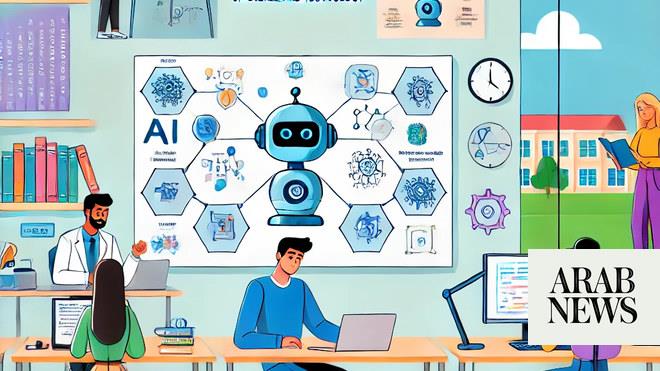
On 7 October 1779 a letter appeared in Berrow’s Worcester Journal. “To the printer,” wrote a disgruntled reader. “I take the liberty of informing you and the public that the account of a melancholy accident happening to a poor man at Evesham which was inserted in your last paper is utterly devoid of foundation.”
Reports of a man falling in a vat of boiling ale were, it turned out, greatly exaggerated, published on the back of an anonymous tip. But now the journal, which lays claim to being the oldest surviving newspaper in the world, says it has a cutting-edge new method to help reporters get out of the office and check their facts: artificial intelligence.
The journal, first published in 1690 and now a free sheet containing content from the Worcester News, is one of several publications housed by the UK’s second biggest regional news publisher to hire “AI-assisted” journalists to report on local news.
Newsquest, which publishes more than 200 titles including the Glasgow Herald, the Brighton and Hove Argus and the Lancashire Telegraph, has hired eight “AI-assisted” reporters in a number of newsrooms across the country in the past year.
The AI reporters use an in-house copywriting tool based on the technology ChatGPT, a souped-up chatbot that draws on information gleaned from text on the internet. Reporters input mundane but necessary “trusted content” – such as minutes from a local council planning committee – which the tool turns into concise news reports in the publisher’s style.
With the AI-assisted reporter churning out bread and butter content, other reporters in the newsroom are freed up to go to court, meet a councillor for a coffee or attend a village fete, says the Worcester News editor, Stephanie Preece.
“AI can’t be at the scene of a crash, in court, in a council meeting, it can’t visit a grieving family or look somebody in the eye and tell that they’re lying. All it does is free up the reporters to do more of that,” she says. “Instead of shying away from it, or being scared of it, we are saying AI is here to stay – so how can we harness it?”
She adds that Newsquest’s tool does not generate content – a trained journalist puts information into the tool, which is then edited and tweaked if necessary by a news editor – and will, they hope, avoid ChatGPT’s reputation for being inaccurate.
In a recent interview with the Press Gazette, Newsquest’s CEO, Henry Faure Walker, said the introduction of an AI-assisted role had proved invaluable at the Hexham Courant in Northumberland in September, when the town was suddenly at the centre of a national news story when the Sycamore Gap tree on Hadrian’s Wall was felled by a vandal.
“The AI system reporter could pretty much hold the fort for the week, filling the paper, and it freed the other reporter to go out and do really good investigative stuff, videos, and get behind the story, which we wouldn’t be able to do. We are going to be rolling cautiously,” he said.
Jody Doherty-Cove, head of editorial AI at Newsquest, says he understands anxiety about AI in journalism, but insists there are multiple safeguards at Newsquest including extensive training and a new code of conduct.
Recently a reporter received the group’s first response to an AI-generated freedom of information request – about the cost of tea and biscuits provided at council meetings. A reporter provided the idea, but AI generated the letter and found the email address to send it to.
Doherty-Cove predicts that soon the use of AI as a newsroom tool will be widespread and uncontroversial. “In the future, the term AI-system reporter will be as redundant as the term internet-assisted reporter sounds now,” he says. “The internet has helped support journalists to find information and create more enriching stories, and AI offers those benefits as well.”
In June, the Guardian published its generative AI principles promising to only use the technology with caution and care, and in September blocked OpenAI from using its content to power artificial intelligence products such as ChatGPT.
And the New York Times this week sued OpenAI and Microsoft for what the lawsuit claims is an attempt “to free-ride on the Times’s massive investment in its journalism by using it to build substitutive products without permission or payment”. In response, OpenAI said it “respects the rights of content creators and owners” and was “surprised and disappointed with this development” after going into talks with the publication.
Local reporters – increasingly thin on the ground, overstretched and underpaid – need all the help they can get. In the last 12 months alone Reach, publisher of the Liverpool Echo and the Manchester Evening News as well as the Mirror and Express titles, has slashed 800 roles in several bruising rounds of cuts.
Reach created controversy in the spring when it revealed it was testing the use of AI to write news stories and had published its first articles, including “Seven Things to do in Newport”, written using the technology. But its chief executive, Jim Mullen, said job cuts were not related to AI and told its journalists they should not fear being replaced by machines.
Nonetheless, the number of reporters – and local publications – continue to decline. According to evidence from the Charitable Journalism Project, there are probably fewer local newspapers in Britain now than at any time since the 18th century. Long-term decline has accelerated rapidly: more than 320 local titles closed between 2009 and 2019 as advertising revenues fell by about 70%.
If Berrow’s Worcester Journal is not to join their ranks, it will have to maintain its knack for reinvention, says Preece. “Every newspaper editor knows that they are just a guardian for a short space of time, and all you can do is the best for that title. But to do that you have to embrace change, you have to move with the world.”












